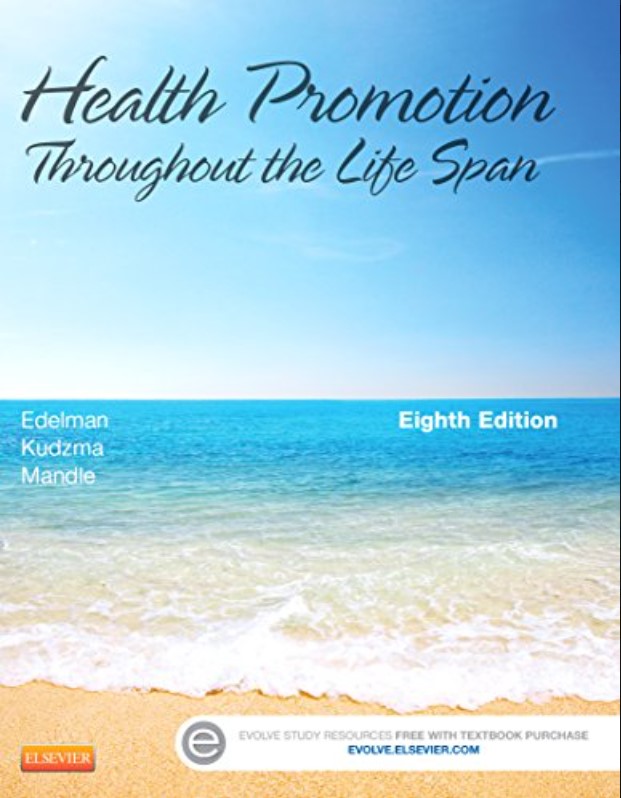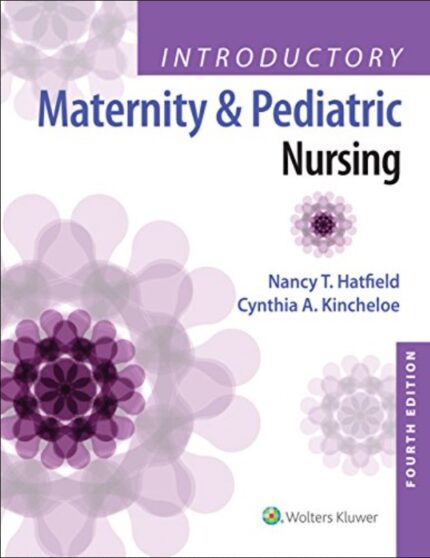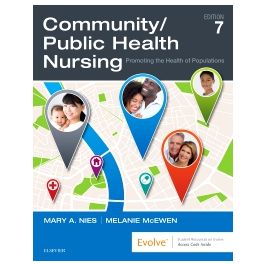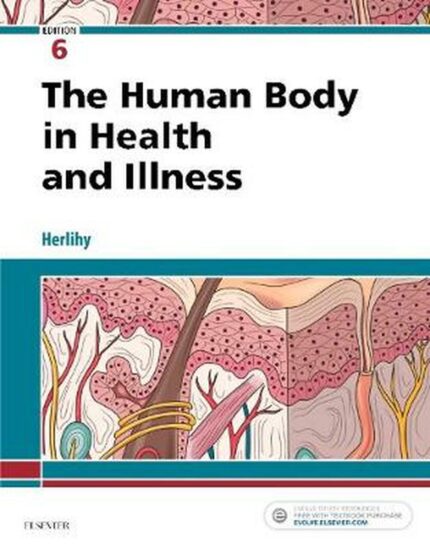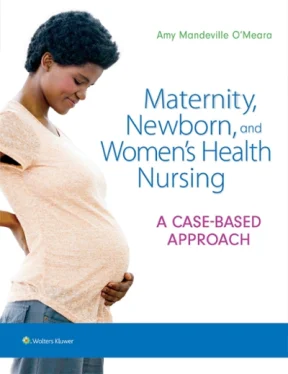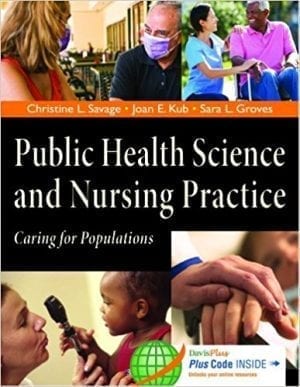Test Bank for Health Promotion Throughout the Life Span 8th Edition by Edelman
Chapter 01: Health Defined: Objectives for Promotion and Prevention
MULTIPLE CHOICE
1. Which model of health is most likely used by a person who does not believe in preventive health care?
a. Clinical model
b. Role performance model
c. Adaptive model
d. Eudaimonistic model
ANS: A
The clinical model of health views the absence of signs and symptoms of disease as indicative of health. People
who use this model wait until they are very sick to seek care.
DIF: Cognitive Level: Remember (Knowledge) REF: p. 3
2. A person with chronic back pain is cared for by her primary care provider as well as receives
acupuncture. Which model of health does this person likely favor?
a. Clinical model
b. Role performance model
c. Adaptive model
d. Eudaimonistic model
ANS: D
The eudaimonistic model embodies the interaction and interrelationships among physical, social, psychological,
and spiritual aspects of life and the environment in goal attainment and creating meaning in life. Practitioners
who practice the clinical model may not be enough for someone who believes in the eudaimonistic model. Those
who believe in the eudaimonistic model often look for alternative providers of care.
DIF: Cognitive Level: Apply (Application) REF: p. 3
3. A state of physical, mental, spiritual, and social functioning that realizes a person’s potential and is
experienced within a developmental context is known as:
a. growth and development.
b. health.
c. functioning.
d. high-level wellness.
ANS: B
Health is defined as a state of physical, mental, spiritual, and social functioning that realizes a person’s potential
and is experienced within a developmental context.
DIF: Cognitive Level: Remember (Knowledge) REF: p. 5
4. Which of the following best describes a client who has an illness?
a. Someone who has well-controlled diabetes
b. Someone with hypercholesterolemia
c. Someone with a headache
d. Someone with coronary artery disease without
angina ANS: C
https://studentmagic.indiemade.com/
Someone with a headache represents a person with an illness. An illness is made up of the subjective experience
of the individual and the physical manifestation of disease. It can be described as a response characterized by a
mismatch between a person’s needs and the resources available to meet those needs. A person can have a disease
without feeling ill. The other choices represent disease.
DIF: Cognitive Level: Analyze (Analysis) REF: p. 6
5. Which US report is considered a landmark document in creating a global approach to health?
a. The 1990 Health Objectives for the Nation: A Midcourse Review
b. Healthy People 2020
c. Healthy People 2000
d. The U.S. Surgeon General Report
ANS: C
Healthy People 2000 and its Midcourse Review and 1995 Revisions were landmark documents in which a
consortium of people representing national organizations worked with US Public Health Service officials to
create a more global approach to health.
DIF: Cognitive Level: Remember (Knowledge) REF: p. 6
6. Which of the following represents a method of primary prevention?
a. Informational session about healthy lifestyles
b. Blood pressure screening
c. Interventional cardiac catheterization
d. Diagnostic cardiac catheterization
ANS: A
Primary prevention precedes disease or dysfunction. It includes health promotion and specific protection and
encourages increased awareness; thus, education about healthy lifestyles fits this definition. Blood pressure
screening does not prevent disease, but instead identifies it.
DIF: Cognitive Level: Apply (Application) REF: p. 11
7. Which of the following represents a method of secondary prevention?
a. Self–breast examination education
b. Yearly mammograms
c. Chemotherapy for advanced breast cancer
d. Complete mastectomy for breast cancer
ANS: B
Screening is secondary prevention because the principal goal of screenings is to identify individuals in an early,
detectable stage of the disease process. A mammogram is a screening tool for breast cancer and thus is
considered a method of secondary prevention.
DIF: Cognitive Level: Apply (Application) REF: p. 15
8. Which of the following represents a method of tertiary prevention?
a. Drunk driving campaign
b. Road blocks for drunk driving
c. Emergency surgery for head trauma after a motor vehicle accident
d. Physical and occupational therapy after a motor vehicle accident with head
trauma ANS: D

